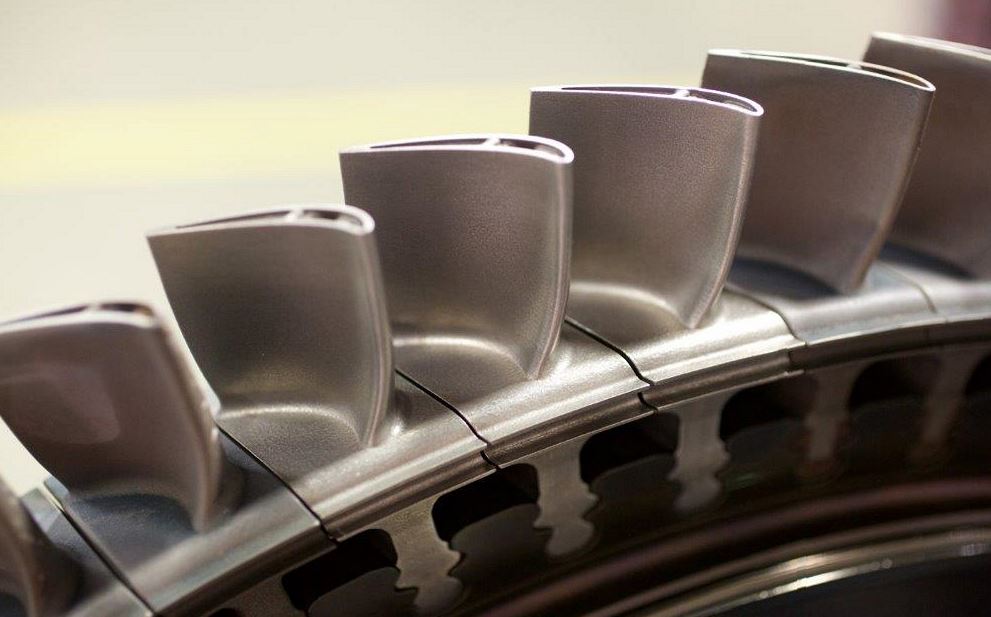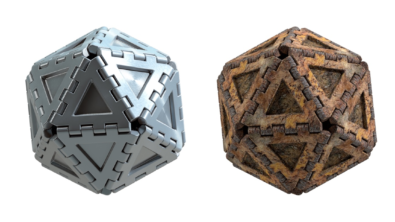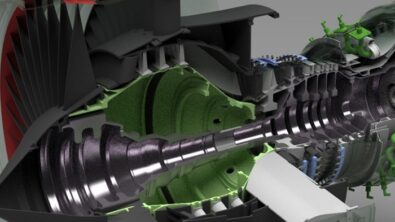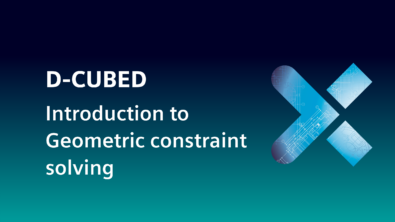Parasolid v33.1 release highlights

Parasolid v33.1 delivers a wide range of enhancements focussed on improving workflows for the wide range of applications built on Parasolid. These include continued extension of classic functionality and completing coverage of classic operations on mixed models as the Convergent Modeling paradigm becomes our core technology. Enhancements delivered in Parasolid v33.1 include:
Modeling
Classic modeling enhancements are delivered including:
- Spun outline creation now supports the option of producing the visible outline (exterior only) or the invisible outline (exterior and interior) as shown in the image below.
- Tracking of outlining operations is improved with an optional report documenting all the originating entities that contributed to that element and mapping outline elements to transforms of the bodies from which the outline was created.
- Slicing of a model for additive manufacturing has been made easier and faster using a single surface tool and a list of offsets to create polyline results.
- Creating edge offsets has improved Identification and trimming of self-intersections for more configurations.

Modeling with Mixed Models
Several classic operations are extended to operate on mixed geometry, including:
- Automatching of tool and target between meshes, and between mesh faces and classic faces is now supported; faces can match exactly, faces can overlap, one face can be within boundary of the other.
- Face taper and face offset now support a mix of classic and facet faces in a single operation.
- Body offset, hollow and thicken now support a mix of classic and facet faces in a single operation.

Blending Mixed Models
More complex blending operations and configurations are now supported for mixed models, including:
- Creating complex mixed blends with different radii and overflowing classic blends onto facet faces.
- Creating smooth overflow in mixed apex-range chamfers.
- Improved cap faces when creating blends and higher quality cap faces when deleting mesh blends.
- Identifying underlying faces of a mesh blend and preserving blend information after repairing meshes.

Faceting and Rendering
Enhancements have been included to improve performance, including coverage for mixed models:
- Rendering functions can now run concurrently with other Parasolid functions, and new functions identify and manage threads that have made GO calls.
- GO functions can be declared as thread-safe, improving performance of SMP-based concurrency and enabling concurrent rendering via multiple threads.
- Fewer faces are now re-facetted in incremental facetting when using topology matching and improved facets in some configurations when using geometry matching.
Repairing Mixed Models
Tools have been added to help adjust mixed models to get a better configuration, including:
- Detect and repair degeneracies and flat facets in mesh faces to within a specified modelling tolerance.
- Better edge merging in manifold Booleans with improved G1 edge smoothing in a mesh.
- Improved repair of faces and shells in mixed bodies.
Native Lattice Support in Parasolid
Functionality for modeling with lattice structures has been extended to enable:
- Attaching of lattices to parts as construction geometry and clipping of a lattice to a surface.
- Creating meshes from lattices with local self-intersections.
- Smart handling of balls and rods at lattice boundary, such as removing rods without balls after clipping.
- Enabling lattices to be transmitted and received.
- Automatic setting of a ball’s minimum radius to match the largest rod attached to it.
Platform Support
The Parasolid continues its industry-leading policy of expanding platform support to address emerging markets and increasingly diverse usage of Parasolid. V33.1 adds to existing support for Android, iOS and macOS mobile devices with full production quality releases on ARM processors for:
- Windows 10 version 1809 or later, running on 64-bit ARM-based computers.
- macOS 11.0 or later, running on “Apple Silicon” ARM-based Macintosh computers.


